- Did you know that Windows 11 has a secret restart method? Here's how to access it
- This Lenovo ThinkPad model ditches a decade-long streak - and I'm glad it did
- How these portable solar panels are saving me $30 a month - and what else to know
- I replaced my iPhone with an e-paper Android handset - here's my verdict after a month
- Darcula Phishing as a Service Operation Snares 800,000+ Victims
6 Best Multi-Factor Authentication (MFA) Solutions for 2024

- Best free MFA app for individuals: Google Authenticator
- Best MFA software for small to medium-sized businesses: Cisco Duo
- Best MFA solution for developers in startups and nonprofits: Auth0
- Best MFA software for enterprises: PingID
- Best MFA solution for developers building self-hosted applications: FusionAuth
- Best for building a customized workforce IAM solution: Okta
Multi-factor authentication requires users to present two or more pieces of evidence to prove their identity, such as a password and a one-time code sent to an authorized device. Requiring a secondary authentication factor reduces the risk of breaches caused by brute force attacks, social engineering and other methods used to steal or guess passwords, improving a company’s overall security posture.
For an example of how MFA prevents data breaches, read How to Prevent Phishing Attacks with Multi-Factor Authentication.
MFA software solutions provide multi-factor authentication for individual end-users, organizational workforces and customer-facing applications. Some platforms also offer identity and access management (IAM) features like single sign-on or additional functionality like threat detection. This guide compares the top multi-factor authentication tools based on use case, features and price.
Top MFA software comparison
Each of the MFA tools on this list is the best for a particular use case or deployment environment due to their pricing structure, unique feature offerings and ease of use.
| Software | Solution category | Authentication types | Hosting options | Pricing |
|---|---|---|---|---|
| Google Authenticator | Individual MFA | Mobile app, software token, mobile push, risk-based | Cloud-based | Free |
| Cisco Duo | Workforce MFA | Mobile app, software token, hardware token, mobile push, WebAuthn, biometric | Cloud-based | Free MFA for up to 10 users; plans start at $3/user/month. |
| Auth0 | Customer IAM | Software token, mobile push, WebAuthn, biometric, SMS notification, voice notification, email notification | Cloud-based (public or private) | Free for up to 7,500 users; plans start at Essentials: $35/month (min. 500 users). |
| PingID | Workforce MFA, Customer MFA | Mobile app, software token, mobile push, WebAuthn, biometric, SMS notification, voice notification, email notification, third-party hardware token, third-party authenticator apps | Cloud-based | Plans start at $3/user/month (min. 5,000 users). |
| FusionAuth | Customer IAM | Third-party authenticator apps, software token, mobile push, biometrics, SMS notification, voice notification, email notification | Cloud-based (public or private), self-hosted | Plans start at $37/month. |
| Okta | Workforce MFA, Customer IAM | Mobile app, software token, mobile push, WebAuthn, biometric, SMS notification, voice notification, email notification, third-party hardware token, third-party authenticator apps, U2F | Cloud-based | Plans start at $3/user/month ($1,500 annual min). |
Google Authenticator: Best free MFA app for individuals
Google Authenticator is a free MFA app for Android, iOS, Wear OS and Blackberry. It generates time-based one-time passwords for a wide range of third-party software with very little setup. Google Authenticator is an extraordinarily useful MFA tool for individual end-users because it provides TOTPs for so many different applications and services in a single place. However, it doesn’t natively offer any multi-user administration functionality for organizations without being integrated with another management platform.
Want to try another free MFA app? Read our review of the Top 6 Google Authenticator Alternatives.
Why we chose Google Authenticator
This tool is like a free skeleton key for end-users, granting them TOTPs for many different applications and services in a single place.
Pricing
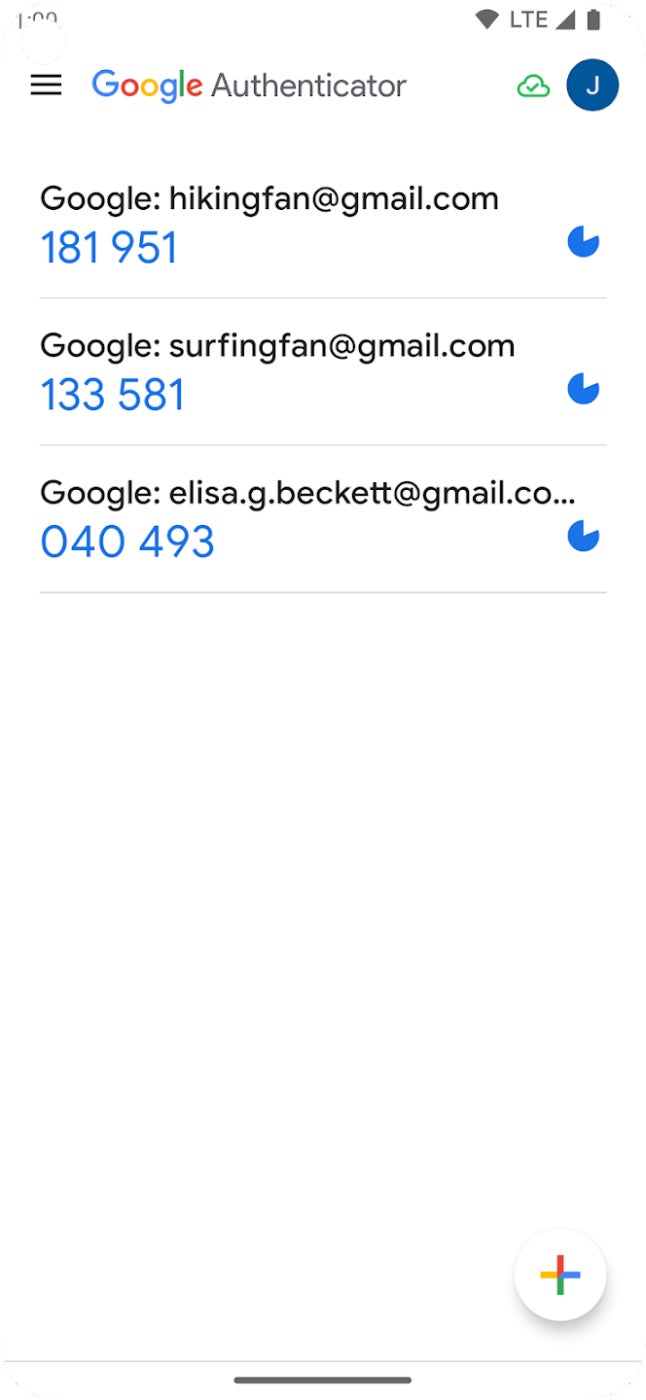
Features
- Software token authentication with TOTPs.
- Mobile push authentication that allows users to accept or deny an authentication without a code.
- Allows the optional use of tokens on multiple devices.
Pros
- Completely free.
- Provides TOTPs for many different apps and services.
- Easy to integrate with other software.
Cons
- Does not offer multi-user administration functionality for organizations.
For more information, read our comparison of Authy vs. Google Authenticator.
Cisco Duo: Best MFA software for small to medium-sized businesses

Duo (now owned by Cisco) is a cloud-based access management tool that provides free MFA for up to 10 users, making it a great choice for budget-conscious small businesses looking for basic functionality. For SMBs looking for enhanced IAM capabilities, paid plans unlock additional features such as single sign-on, passwordless authentication, adaptive and risk-based authentication, device visibility and threat detection. The Premier plan also offers Zero Trust Network Access for VPN-less remote access to enterprise resources.
Why we chose Cisco Duo
Cisco Duo offers a complete MFA platform for free to organizations with 10 or fewer users, and SMBs can get a full suite of IAM features + ZTNA for an affordable price.
Pricing
- Free MFA for up to 10 users.
- Essentials plan adds SSO, mobile push and passwordless authentication for $3 per user per month.
- Advantage plan adds adaptive MFA, device visibility and threat detection for $6 per user per month.
- Premier plan adds ZTNA and endpoint protection for $9 per user per month.
Features
- Software and hardware token authentication with OTPs.
- Mobile push authentication.
- Supports biometric authenticators via WebAuthn and USB-based Fast Identity Online security keys.
- Integrates with Microsoft Windows for servers and workstations to provide MFA for local log-ons, Remote Desktop and User Account Control (UAC) elevation prompts.
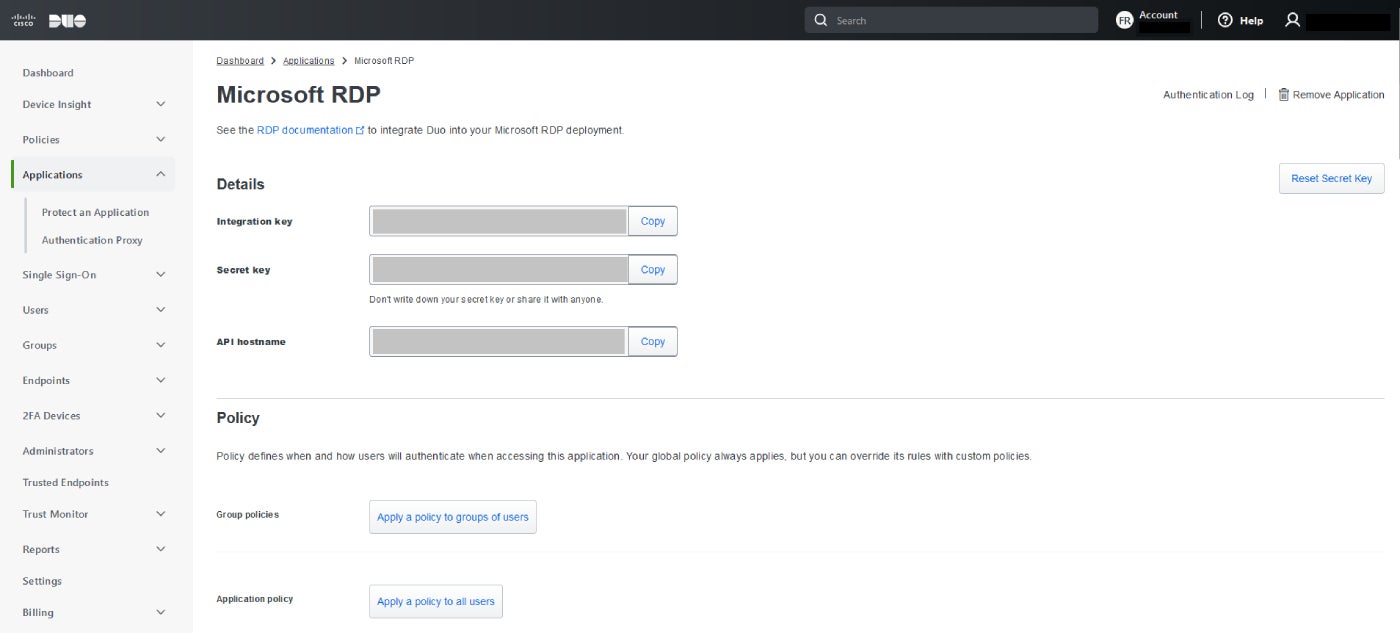
Pros
- Provides free MFA for up to 10 users.
- Paid plans are affordable for SMBs while providing robust features.
- Uniquely offers both ZTNA and Microsoft Windows integrations.
Cons
- Does not provide as much granular user and device control as other solutions.
- Mobile push notifications can be slow, depending on the carrier.
For more information, view Duo Passwordless: Expert Tips and Your Questions Answered.
Auth0: Best MFA solution for developers in startups and nonprofits

Auth0 is a customer identity and access management solution that developers integrate into their customer-facing (or partner-facing) applications to provide functionality like MFA and SSO. Auth0 hosts the solution in their cloud, but they offer private clouds for customers who need dedicated resources. MFA is available for free in the public cloud for up to 7,500 active users and includes machine to machine authentication and customizable logins.
Paid plans can get pricey, but they include features like SSO, identity management and step-up MFA, which requires stronger authentication to access more sensitive resources. Plus, Auth0 offers special pricing for startups and nonprofits.
Why we chose Auth0
We chose Auth0 for its focus on CIAM and design with startup developers in mind. The solution is free for up to 7,500 users, and startups and nonprofits get discounted pricing on paid plans.
Pricing
- Free MFA for up to 7,500 active users.
- Essentials plan adds passwordless authentication and additional administrative features for $35 per month (for 500 users).
- Professional plan adds cross-app SSO, M2M capacity and many other features for $240 per month (for 500 users).
- Enterprise plan is customizable and provides 99.99% SLA and enterprise support.
Features
- Hardware and software OTP authentication.
- Mobile push, SMS, voice, email and WebAuthn authentication.
- Custom-branded login screens, domains and email notifications.
- Highly extensible with integrations and add-on features.
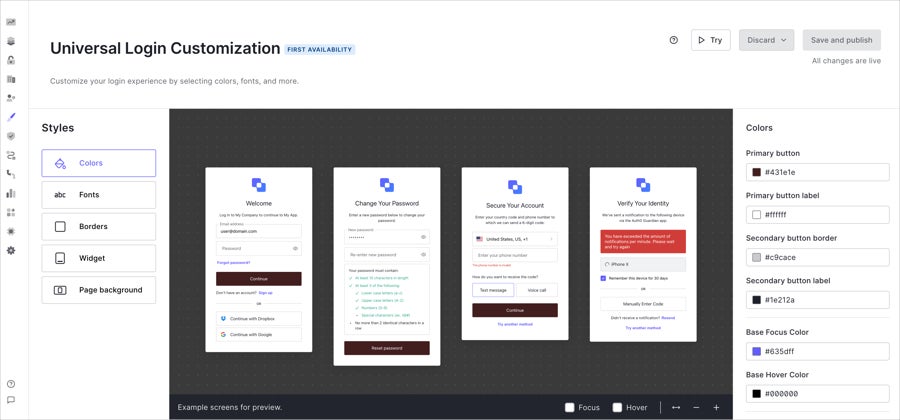
Pros
- Provides free customer-facing MFA for up to 7,500 active users and offers significant discounts to startups and nonprofits.
- Paid plans offer a highly customizable experience with robust identity management features.
- Enterprise customers can upgrade to a private cloud to get dedicated resources.
Cons
- Does not provide out-of-the-box workforce identity.
- Pricing is high, with many features restricted to Enterprise plans that can cost more than $30k per month, according to customer reviews.
For more information, read our comparison of Auth0 vs. JumpCloud.
PingID: Best MFA software for enterprises
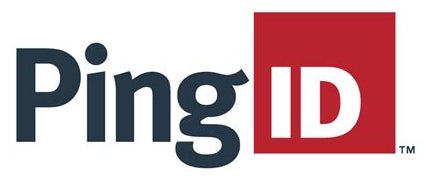
PingID is the MFA component of the PingOne cloud platform for identity and access management. At a minimum, this platform also includes SSO and Microsoft integration, while upgraded plans provide adaptive MFA, advanced security features and VPN/remote access integrations. The PingID mobile app supports fingerprint, facial recognition, swipe, software tokens and Apple Watch authentication. PingID also offers MFA via desktop software tokens, third-party hardware tokens, and email, SMS and voice OTPs. Plan prices are affordable per user, but there’s a 5,000 user minimum, favoring enterprises and other very large organizations.
Why we chose PingID
PingID is part of a comprehensive workforce identity platform with features like SSO and Windows integrations, and Ping Identity offers competitive per-user pricing for even its most advanced workforce IAM plans.
Pricing
- Essential plan provides SSO, MFA, SaaS director, and Microsoft integration for $3 per user per month (min. 5,000 users).
- Plus plan adds adaptive MFA and passwordless authentication for $6 per user per month (min. 5,000 users).
- Premium plan is customizable and adds VPN/remote access integrations and API access control.
- Customer-facing MFA is available with PingOne for customers, starting at $40k per year.
Features
- MFA mobile app supporting fingerprint, facial recognition, swipe, software tokens and Apple Watch authentication.
- Desktop software token, mobile push, email, SMS, voice and third-party hardware token authentication.
- SSO, Microsoft integrations, adaptive MFA and VPN/remote access integrations available.
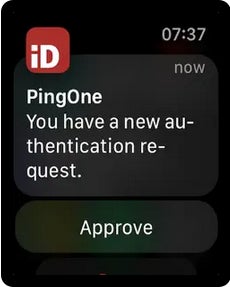
Pros
- Part of a complete workforce IAM solution with SSO and Microsoft integration.
- Provides a robust MFA mobile app supporting a variety of authentication methods.
- Offers competitive per-user pricing for large organizations.
Cons
- Authentication can be slow or buggy.
- Must have at least 5,000 active users to receive advertised pricing.
For more information, read our comparison of Ping Identity vs. Okta.
FusionAuth: Best MFA solution for developers building self-hosted applications

FusionAuth is a customer-facing authentication solution that integrates with custom software. In addition to MFA, it provides passwordless, biometric, and M2M authentication, as well as SSO, advanced threat detection, user management and password control. FusionAuth, like Auth0, targets developers building custom applications and provides features like no-code configuration and seamless API integration to make their jobs easier. What differentiates FusionAuth is the customer’s ability to self-host the solution in their on-premises, private cloud or public cloud environment (e.g., AWS). This feature gives developers complete control over access and security, simplifying compliance in heavily-regulated industries like healthcare and federal government contracting.
Why we chose FusionAuth
FusionAuth offers the most flexible hosting options, including managed cloud (public and private) and self-hosted plans. It’s also a comprehensive customer-facing authentication solution designed with developers in mind.
Pricing
- Basic hosting in the FusionAuth cloud provides all the authentication features named above for $37 per month.
- Business hosting provides a dedicated server in the FusionAuth cloud for $225 per month.
- High Availability hosting provides dedicated, redundant server configurations in the FusionAuth cloud with backups and an SLA for $500 per month.
- Self-hosted Starter plan provides MFA, breached password detection, M2M authentication and more for $125 per month (for first 10k users).
- Self-hosted Essentials plan adds advanced connectivity and security features, Webauthn biometrics and email support for $850 per month (for first 10k users).
- Self-hosted Enterprise plan adds advanced threat detection and 24/7 support (including Kubernetes tech support) for $3,300 per month (for first 10K users).
- Note: There is a free self-hosted plan that provides core authentication, but not MFA.
Features
- MFA using passwordless, biometric, M2M, mobile push, SMS and email authentication.
- SSO, advanced threat detection, step-up MFA, user management and breached password detection.
- Unlimited social media, gaming and enterprise login integration.
- Customized and localized MFA messages.
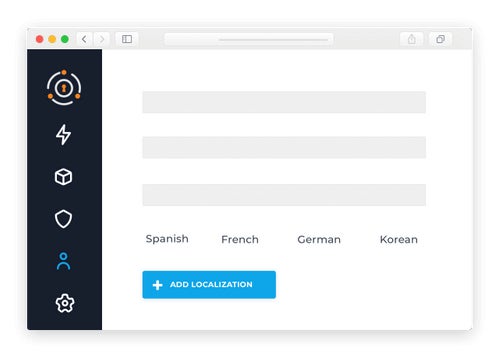
Pros
- Offers many self-hosting options for developers who need greater control over authentication and security.
- Cloud-based plans all include a comprehensive feature set.
- Provides high availability managed cloud features like redundant server configurations and backups for mission-critical applications.
Cons
- Customers report a steep learning curve to get started with most features.
- Pricing is high compared to similar solutions.
Okta: Best for building a customized workforce IAM solution
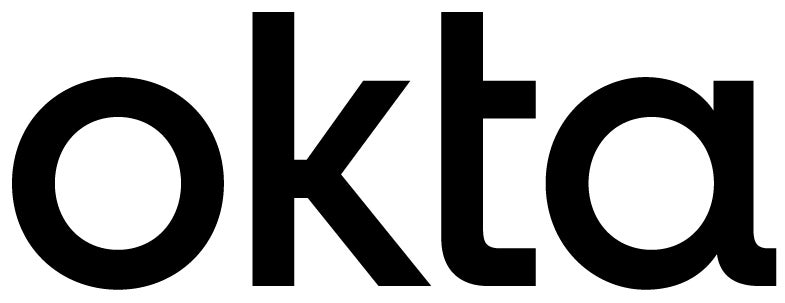
Okta is a cloud-based IAM platform that lets customers mix-and-match a la carte identity features to build customized solutions that address all their requirements without forcing them to pay for things they don’t need. The basic MFA feature authenticates via Okta’s mobile OTP and push apps, as well as email, SMS, biometrics, voice and third-party hardware and software tokens. It also provides some context-aware authentication capabilities, though the upgraded Adaptive MFA plan provides even more context factors. Other Okta products include SSO, lifecycle management, API access management, automation workflows and more. Most of these features are very affordably priced, though there’s a $1,500 annual contract minimum.
Why we chose Okta
Okta allows customers to build their own workforce IAM solution by combining a la carte identification features at competitive prices. The basic MFA offering includes multiple mobile app options and context-aware authentication.
Pricing
- Basic MFA is $3 per user per month ($1,500 annual contract minimum).
- Adaptive MFA is $6 per user per month ($1,500 annual contract minimum).
- Other features available for $2–$15 per user per month.
- Customer IAM plans with MFA do not use a la carte pricing and start at $240 per month.
Features
- MFA mobile app as well as mobile push, passwordless, email, SMS, voice, U2F and third-party hardware and software token authentication.
- Context-aware adaptive MFA (with additional context factors available with the Adaptive MFA plan).
- Many additional features available to add-on a la carte.
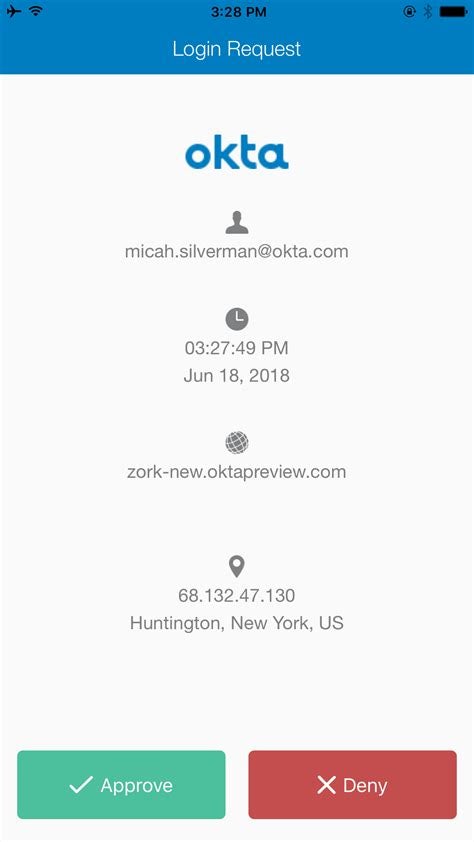
Pros
- Provides MFA as a standalone feature at a highly competitive price.
- Supports many different authentication methods and seamlessly integrates with many different applications.
- Allows companies to build customized IAM solutions to gain all the features they need.
Cons
- $1,500 annual contract minimum may be prohibitive to small businesses.
For more information, read the full Okta review.
How do I choose the best MFA software for my business?
Each multi-factor authentication product on this list excels in one or more use cases.
Google Authenticator is the best solution for individual end users looking for a free MFA app. Cisco Duo is an affordable yet powerful tool for budget-conscious SMBs. Auth0’s developer-focused CIAM platform targets startups and nonprofits with special pricing offers. PingID offers competitive pricing packages for large enterprise workforce or customer identity. FusionAuth provides a developer-friendly customer authentication solution with flexible, cloud-based or self-hosting options. Okta’s cloud-based workforce identity platform offers MFA and other features a la carte so companies can build a customized IAM solution.
The different feature sets and pricing structures of each solution can make it difficult to make direct comparisons, so you’ll need to analyze your requirements to determine which MFA tool is the best fit.
Review methodology
We conducted a thorough analysis of the capabilities, features and pricing structure of each product to determine which MFA tool was the best for each use case. This involved reviewing public-facing data from vendor websites and datasheets, reading user reviews from sites like G2 and Gartner Peer Insights, and, when possible, downloading free trial versions for hands-on testing.

